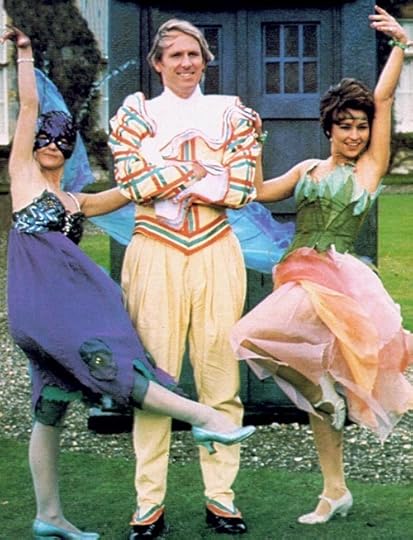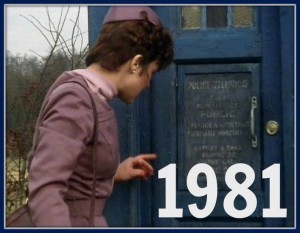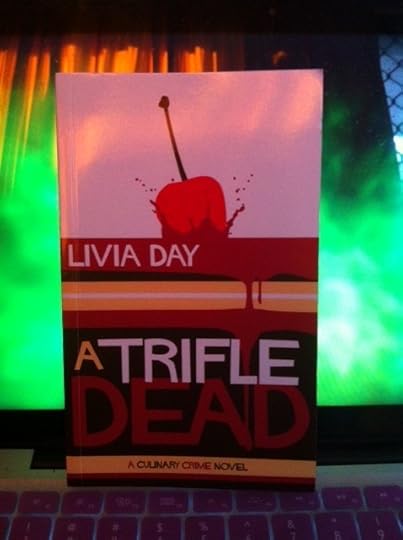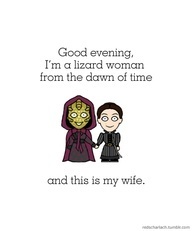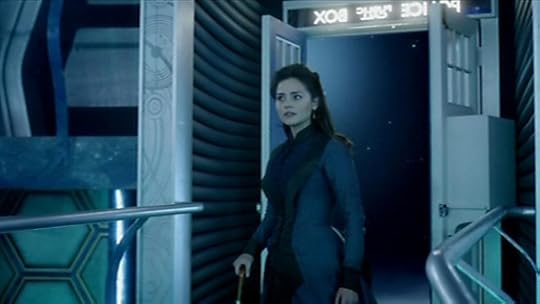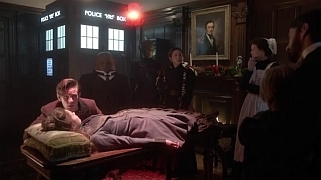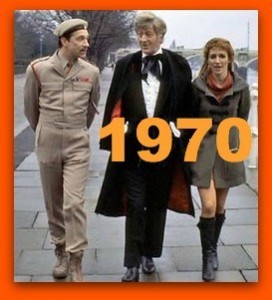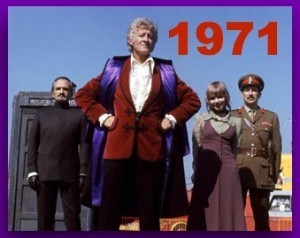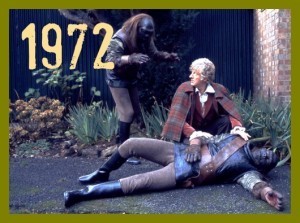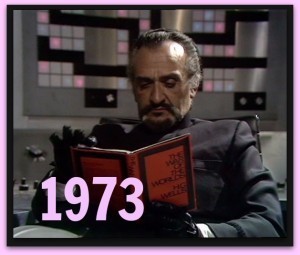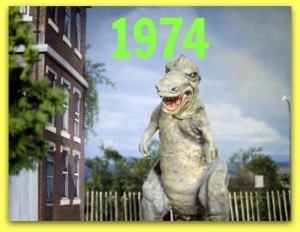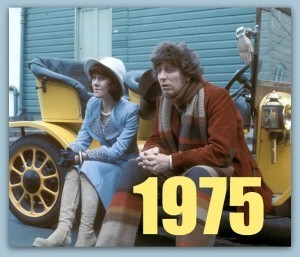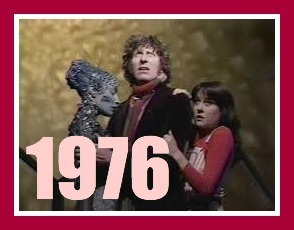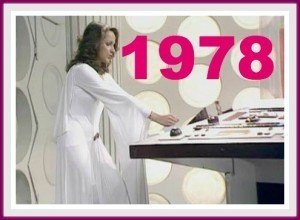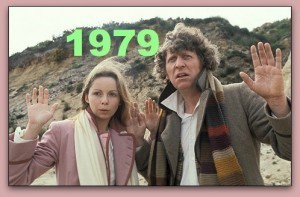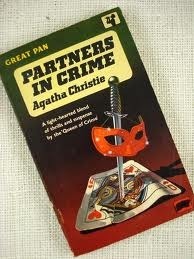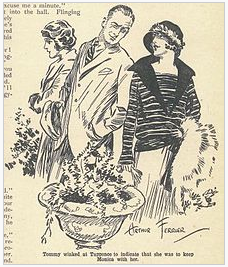Tansy Rayner Roberts's Blog, page 84
March 27, 2013
Watching New Who: The Sontaran Stratagem/The Poison Sky
 David is coming to New Who for the first time, having loved Classic Who as a kid. Tehani is a recent convert, and ploughed through Series 1 to 6 (so far) in just a few weeks after becoming addicted thanks to Matt Smith – she’s rewatching to keep up with David! Tansy is the expert in the “Doctor Who in Conversation” team, with a history in Doctor Who fandom that goes WAY back, and a passion for Doctor Who that inspires us all. We are working our way through New Who, using season openers and closers, and Hugo shortlisted episodes, and sometimes a couple of extra episodes we love as our blogging points. Just for fun!
David is coming to New Who for the first time, having loved Classic Who as a kid. Tehani is a recent convert, and ploughed through Series 1 to 6 (so far) in just a few weeks after becoming addicted thanks to Matt Smith – she’s rewatching to keep up with David! Tansy is the expert in the “Doctor Who in Conversation” team, with a history in Doctor Who fandom that goes WAY back, and a passion for Doctor Who that inspires us all. We are working our way through New Who, using season openers and closers, and Hugo shortlisted episodes, and sometimes a couple of extra episodes we love as our blogging points. Just for fun!
Thanks to everyone who nominated us for the William Atheling Jr Award for Criticism or Review, we are chuffed and delighted and might even be inspired to run through these a bit faster than we have been doing. No promises, obviously!
TEHANI:
Righto, so we’ve skipped over “The Fires of Pompeii” and “Planet of the Ood”, moving along to “The Sontaran Strategem/Poison Sky” double episode (not Hugo nominated, but Tansy felt they were important to talk about – we agreed!). I would like to mention a couple of things about the preceding two episodes though. In “The Fires of Pompeii”, we saw Donna make the Doctor to rescue just one family from the eruption, effectively forcing him to remember that EVERYONE MATTERS, and clearly setting her up as his conscience and moral compass. This is interesting when followed by “Planet of the Ood”, when his compassion is demonstrated in his fight to save the Ood despite their apparently murderous tendencies. Donna’s impact is swift and cannot be overstated, as it becomes so important later on!
DAVID:
“Planet of the Ood” is an excellent episode, because it highlights the idea of the Doctor as an outsider who challenges the status quo of the times and places that he and his companions arrive in. The episode manages to ask some important moral questions and has some genuinely creepy and shocking moments, like when we find out what their translation sphere has actually replaced.
And, I always enjoy a good historical episode, especially one where we know exactly what *has* to happen to fit into history as we know it, and wonder how the Doctor is going to save the day (or the people in the episode that we care about) given that catastrophe is going to strike, no matter what.
TANSY:
“The Fires of Pompeii” is one of my favourites. Not only did they use some of the very authentic sets from HBO’s Rome, but they also used some really delicious snippets of real Roman social history. And Donna is wonderful in it. He needs her so much … and it’s wonderful to see how much she blossoms and grows in confidence as she realises that.
TEHANI:
Two good episodes to set us on the right path for the Donna/Doctor relationship. And then we come to “The Sontaran Strategem/Poison Sky” duo!
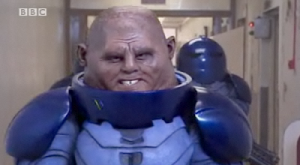 DAVID:
DAVID:
Given the title, it is hardly a spoiler to talk about how excited I was to see the return of one of my favourite alien races from Classic Who. I always loved the concept of the Sontarans and their endless war with the Rutans, so this was a bit of a fanboy moment. We’ve noted how there has been a concerted effort to show the New Who is a continuation of what has gone before, and it always thrills me to see one of the familiar foes of the Doctor. They may not be the Daleks, but the Sontarans have certainly given the Doctor some trouble. In fact, they are one of the few races to successfully attack Gallifrey itself, IIRC.
TANSY:
Oh, Sontarans. I love them. I may love them more that Cybermen and Daleks, even if mostly when I think of them it’s of the first appearance of one Sontaran in “The Time Warrior”, a wonderful Pertwee story which was also Sarah Jane Smith’s debut.
I really like what the new series has done with this classic monster, and this story by Helen Rayner (the only female writer of the new series!) is a really good reintroduction to them. The premise of the Sontarans as a ruthless clone race eternally at war, and their motives for what they are doing to the Earth in this particular strategem of theirs, all comes together really nicely. The clone aspect was not overly significant in the old series, so I like the way that is emphasised here along with the military obsessions.
They’re short but feisty! I know some fans winced a bit at the Sontar haka, but I loved it as a pointed, effective way to show what the Sontarans are like to a modern audience. It’s also great to see Christopher Ryan back in Doctor Who playing the leader, and oh I did spot Dan Starkey and the gap between his teeth as one (or many?) of the less high ranked Sontarans. I WONDER IF HE’LL BE IMPORTANT TO US IN THE FUTURE.
TEHANI:
There’s a lot to like about these episodes. I hadn’t encountered Sontarans before, from memory, and it was good to revisit this double episode in light of more recent ones! I got a bit annoyed with the American genius this time around (hello, X-Men riff, anyone?) but the tie-back of the work of the genius school to the ending was well done.
TANSY:
I don’t think you’re supposed to like him! I think the idea is that if you had a super SUPER genius kid (which is a common SF trope) who also happened to be a millionaire then realistically they would be more likely to end up a supervillain than a hero. Also, he had been less annoying his sacrifice would have been far more tragic. I really love the scene where his fellow students use to join him on his quest because it’s just not a good idea. His grand plans come to nothing because they’re not sociopaths. It’s a very effective moment.
TEHANI:
I thoroughly enjoyed Wilf again – he’s just fabulous! And I liked the little nods to continuity: in particular, “Are you my mummy?” made me giggle out loud!
 DAVID:
DAVID:
Of course, Wilf and the Sontarans aren’t the only familiar faces to pop up in this episode! There is another moment for the old school fans with the return of UNIT, but I think everyone would have been delighted to see the return of Martha. I like this version of Martha, I thought she showed that she had grown as a person since she had left the Doctor and was a bit more mature and more sure of herself that she had been previously.
TANSY:
Oh Martha, I do love her really. So glad to have her over that whole crush thing and she can get on with being awesome. I feel like she gets a bad rap as a companion because the crush on the Doctor gets more and more annoying in hindsight and it’s hard for many fans to see past that. I worry I might be one of those fans.
But she’s so good here – she’s found her own life and the fact that it’s one the Doctor disapproves of it’s actually quite satisfying. I am not keen on the whole ‘UNIT pushed my degree through’ aspect, though, would prefer it if she had qualified properly and this was a few years later.
Martha and Donna together are one of the great joyful aspects of new series Doctor Who, and it’s sad that it didn’t last long. Even less time than Jack-Rose-Nine, sob! The scene in which the Doctor expects them to fight and instead they hug and start gossiping and refuse to be jealous of each other is GLORIOUS and THE BEST THING EVER.
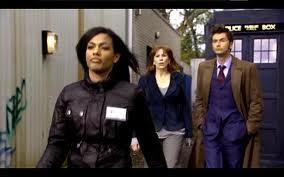 DAVID:
DAVID:
It’s definitely refreshing to see two woman NOT fighting over a man in a TV series, rather than the usual trope. There was an element of that in “School Reunion”, for example, that I didn’t really enjoy. It makes sense to me that Martha and Donna would bond over the shared frustrations of travelling with the Doctor. After all, how many people are you ever going to get to talk to who understand what it is like? So, I am glad that they went that way with their encounter.
As I’ve said before, Martha is one of my favourite aspects of New Who, and it is great to see that she hasn’t simply stopped living her life because of the Doctor, but is getting on with things and being who she wants to be. Just like we know Sarah Jane did, whatever “School Reunion” might have implied!
TEHANI:
It’s definitely nice to see more of Martha, and find out that yes, she’s doing pretty well actually. It makes me even more sad for what happens to certain other companions when they leave the TARDIS…
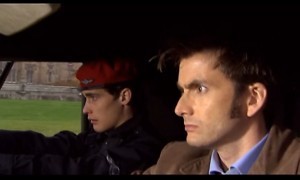 TANSY:
TANSY:
Having UNIT back is also important to me, and while they’ve flirted with it in the past this is the first one that feels like a real UNIT story. It does however make me miss Nicholas Courtney quite fiercely. The Doctor gets to use military resources while grumbling about guns, which is a nice Doctorish thing to do. His misappropriation of Ross into a kind of alternative companion was really sweet and I like that Ross had a snarky sense of humour that came out after an hour or two in the Doctor’s company. We like Ross! Don’t kill off Ross!
(I do think that the Doctor went a bit far with chiding the general at the end for not treating Ross like a real person after his death – DUDE, think about how many letters home this man has had to write in his career, put your judgy hat back on the judgy hatstand…)
One aspect of this story that I think could easily get lost in all the awesomesauce is the great use of Sylvia, Donna’s mum. Sylvia is a hard character to like, because her role is to show us all the reasons Donna doesn’t think she’s worth anything, and to balance out the supportiveness of Wilf. But I think they realised their mistake with Francine in the previous season, who was written as so unrelentingly horrible (all her scenes have her complaining about Martha or someone else in her family, and then she betrays Martha and then she hates the Master – she never gets to crack a smile).
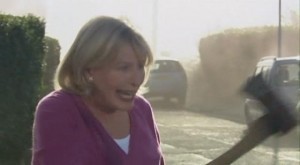 Sylvia then gets some nice positive moments amongst all the negative ones, and it’s good because we really need to sympathise with her later in the season, and this is the story that sets us up to do that. The cliffhanger in the middle of this one is one of my favourites – Wilf is trapped in the car choking to death, the Doctor’s sonic screwdriver can’t get him out of the car, and the same thing is happening to everyone around the world. the Doctor is in total despair … and when the second episode starts, Sylvia (last seen cowering in her doorway) turns up with an AXE because she’s not an IDIOT, and does the obvious but still valiant thing of smashing the window in to save her dad.
Sylvia then gets some nice positive moments amongst all the negative ones, and it’s good because we really need to sympathise with her later in the season, and this is the story that sets us up to do that. The cliffhanger in the middle of this one is one of my favourites – Wilf is trapped in the car choking to death, the Doctor’s sonic screwdriver can’t get him out of the car, and the same thing is happening to everyone around the world. the Doctor is in total despair … and when the second episode starts, Sylvia (last seen cowering in her doorway) turns up with an AXE because she’s not an IDIOT, and does the obvious but still valiant thing of smashing the window in to save her dad.
TEHANI:
The mum/daughter relationships of New Who are interesting. Rose and Martha do still clearly love their mums, despite the flaws we are shown, but Donna, being a bit older, is less obviously a loving daughter. Part of that could also be she gets to have a much more supportive relationship with Wilf, but I agree Tansy, it’s good to see Sylvia get to be a bit of a hero in that scene. And perhaps the companions’ families are something to chat more about when we get to Amy and Rory, eh… Interesting to see what effects a different show runner has!
TANSY:
I know that Jackie has had a massive re-evaluation by fans retrospectively (and some of us loved her all along) and she’s still the cuddliest of the mums, but I do appreciate Sylvia more and more. She’s every bit as trapped in mundanity as Donna was – where was the Doctor thirty years ago, eh? A trip in the TARDIS back then could have done her the world of good.
DAVID:
By the end, I had grown to appreciate Jackie a whole lot more, but Francine really grated on me. I think it is a mistake to write completely unsympathetic characters because, really, it’s very hard to keep them believable. Francine sometimes seemed more like a plot device, acting in certain ways to ensure the story went in a certain direction, rather than a real person. I’m looking forward to seeing where they go with Sylvia, and the whole dynamic of Donna’s family, because already it is very interesting.
TEHANI:
I never really minded Francine – I felt like she’d had a pretty rough trot with Martha’s dad, and her bitterness was quite understandable! And in all, she really was just trying to look out for Martha, only she had no clue what was going on.
To bring us back to these episodes, I was pleased with the ending – I thought boy genius Rattigan’s sacrifice to save the Earth was logical and nicely redeeming.
And I’m interested to know what David thought of the cameo appearance of Rose again?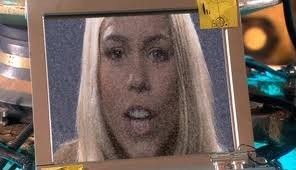 DAVID:
DAVID:
Didn’t she do something similar in “Partners in Crime”? It’s intriguing, I assume it is setting up for something in future episodes. I never really believed that Rose was completely cut off from the main universe, I had a feeling that she’d be back at some point. But, I hope we find out she has moved on from the Doctor, except for fond memories, and has built a fulfilling new life for herself. But, I think I might be setting myself up for disappointment!
TEHANI:
Well, we should just get a hurry on through the episodes so YOU CAN FIND OUT! Onwards!
“Rose”, S01E01
“Dalek”, S01E06
“Father’s Day, S01E08
“The Empty Child/The Doctor Dances”, S01E09/10
“Bad Wolf/The Parting of the Ways”, S01E12/13
Season One Report Card – David, Tansy, Tehani
“The Christmas Invasion,” 2005 Christmas special
“New Earth”, S02E01
“School Reunion,” S02E03
“The Girl in the Fireplace”, S02E04
“Rise of the Cybermen/Age of Steel”, S02E05/06
Army of Ghosts/Doomsday, S02E12/13
Season Two Report Cards: David, Tehani, Tansy
“The Runaway Bride”, 2006 Christmas Special
“Smith and Jones”, S03E01
The Shakespeare Code & Gridlock, S0302-03
Human Nature/The Family of Blood S0308-09
Blink S0310
Utopia / The Sound of Drums / Last of the Timelords S0311-13
“Voyage of the Damned,” 2007 Christmas Special
Season 3 Report Cards: David, Tehani, Tansy
March 26, 2013
Ditmars and Geek Chic
The Ditmar ballot is out! I am delighted to be nominated as Best Fan Writer, as well as for various group projects: Galactic Suburbia, Galactic Chat and the Snapshot. I also have two works up for the William Atheling Jr Award for Criticism or Review: my essay on “Historically Authentic Sexism in Fantasy. Let’s Unpack That.” at Tor.com and the New Who in Conversation series with David and Tehani.
We’ll probably be discussing the shortlists on the next Galactic Suburbia, but I would add that I’m very pleased that my two favourite novels of the year (and others I liked!) are on there,
You can vote if you’re a member (supporting or full) of the National SF Con which this year is Conflux in Canberra.
Elsewhere on the internet, I am a Lady Geek of the Week over at Being Geek Chic as part of their Doctor Who week.
March 25, 2013
Playing Dress Ups in Black Orchid [WHO-50—1982]
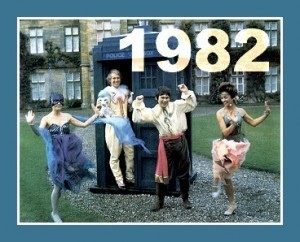 It constantly surprises me how few people love Black Orchid. Yes, the plot is thin, and it relies on some very problematic disability/racial/colonialist/gender tropes from the time period it is set in. But – oh. It’s Doctor Who in the 1920’s! It’s a tiny slice of a murder mystery romp with cricket on the village green, cocktails and the Charleston.
It constantly surprises me how few people love Black Orchid. Yes, the plot is thin, and it relies on some very problematic disability/racial/colonialist/gender tropes from the time period it is set in. But – oh. It’s Doctor Who in the 1920’s! It’s a tiny slice of a murder mystery romp with cricket on the village green, cocktails and the Charleston.
And, I’ll admit, a big part of the reason I have an affection for it is because the TARDIS crew gets to dress up. I really am that shallow.
The opening is one of my favourites – in a clever bit of timing, the TARDIS arrives on the railway platform a moment after a train has come through. As the crew wander around the station, they are met by a chauffeur who has come to bring ‘the Doctor’ to play cricket on the village green. It’s one of those odd coincidences that the TARDIS does rather enjoy, doesn’t she?
Thanks to the Doctor’s topping performance on the cricket pitch, and Nyssa’s odd similarity to the daughter of the house, Ann Talbot, they are all invited back into the home of the Cranleighs, only to become enmeshed in a costume ball and a sinister mystery…
 Tegan is at her brightest and most cheerful in this story, coming right after The Visitation where she has finally made (for the first time) the decision to stay with the Doctor rather than insisting on returning back home ASAP. She enjoys the playacting of this period, ordering a screwdriver and cheering on the cricket, even showing off her Charleston kicks.
Tegan is at her brightest and most cheerful in this story, coming right after The Visitation where she has finally made (for the first time) the decision to stay with the Doctor rather than insisting on returning back home ASAP. She enjoys the playacting of this period, ordering a screwdriver and cheering on the cricket, even showing off her Charleston kicks.
Adric doesn’t have much to do in this one, but any Adric/Nyssa shippers out there might well enjoy how she scolds him into dancing with her and a later scene when he can’t tell her apart from Ann. He spends most of his time at the buffet table, but manages not to say anything especially annoying which makes this a good Adric story.
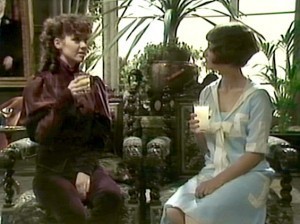 It’s Nyssa who gets the actual plot thanks to the double duty played by Sarah Sutton as both Nyssa and Ann. She does a great job considering that on paper the characters are quite similar – young, aristocratic ladies. But Ann has more of a flighty, effortless tone of voice compared to Nyssa’s gravity, and she pulls off the contrast very efficiently. I’m not quite sure of the logic where Ann’s fiancé Charles can tell that Nyssa is not old enough to drink a screwdriver while about to marry the young lady who looks exactly like her, but still…
It’s Nyssa who gets the actual plot thanks to the double duty played by Sarah Sutton as both Nyssa and Ann. She does a great job considering that on paper the characters are quite similar – young, aristocratic ladies. But Ann has more of a flighty, effortless tone of voice compared to Nyssa’s gravity, and she pulls off the contrast very efficiently. I’m not quite sure of the logic where Ann’s fiancé Charles can tell that Nyssa is not old enough to drink a screwdriver while about to marry the young lady who looks exactly like her, but still…
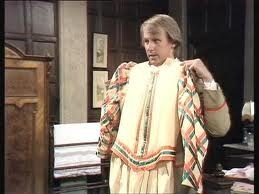 The fancy dress costumes of this story are central to the plot, and gorgeously designed for each of the cast members. The Doctor’s Harlequin costume, stolen in order to frame him for murder, rather cleverly uses the same colour palette as his usual cricket whites – a ‘costume’ which itself takes on a new relevance when he is allowed to play cricket in it.
The fancy dress costumes of this story are central to the plot, and gorgeously designed for each of the cast members. The Doctor’s Harlequin costume, stolen in order to frame him for murder, rather cleverly uses the same colour palette as his usual cricket whites – a ‘costume’ which itself takes on a new relevance when he is allowed to play cricket in it.
Adric’s slightly swashbuckling fancy dress costume manages to be a far more stylish version of what he usually wears, and he has of course added his badge of mathematical excellence to it. Tegan’s outfit is gorgeous and like Adric’s, suits her more than anything else she got to wear for her run as companion – I would not have blamed either actor for hanging on to those costumes for as long as they could.
 But it’s Nyssa and Ann’s fancy dress costumes, based on a real vintage pattern, that steal the show: those delicate blue butterfly frocks. Wearing these, the girls are completely identical, leading to some flirtatious fun and then the shocking cliffhanger in which one of the girls is under threat – we only learn in Episode Two that it was Ann who was attacked, not our Nyssa.
But it’s Nyssa and Ann’s fancy dress costumes, based on a real vintage pattern, that steal the show: those delicate blue butterfly frocks. Wearing these, the girls are completely identical, leading to some flirtatious fun and then the shocking cliffhanger in which one of the girls is under threat – we only learn in Episode Two that it was Ann who was attacked, not our Nyssa.
That cliffhanger was something I missed out on when I was younger, because our copy of the story had been censored for Australian TV with a bodged edit that actually manages to imply Ann has been strangled instead of merely fainting at the sight of the hasty murder of a servant.
I do like the structure of the story, where the first episode is about the Doctor and his friends being taken in and trusted by the family, and the second is about that lie unravelling. Lady Cranleigh’s own deceit, of course, in concealing her mutilated, mentally damaged (and murderous) older son, comes into play in this second episode. The costumes worn by Lady Cranleigh, Charles and Sir Robert, the main players in the drama, are all particularly glamorous and aristocratic, which only goes to accentuate the appalling behaviour of the Cranleighs in particular.
The scene in which Lady Cranleigh confesses all to old family friend Sir Robert is particularly telling of their class privilege and despicable behaviour – especially when they refer to one of the murder victims as ‘the servant.’
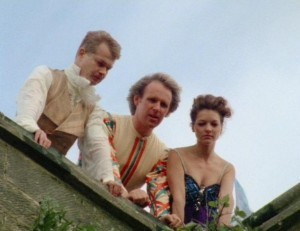 Also, WTF is with Charles pushing his brother off the roof by means of a friendly and inopportune hug? That shot could have been framed rather more tactfully!
Also, WTF is with Charles pushing his brother off the roof by means of a friendly and inopportune hug? That shot could have been framed rather more tactfully!
The story ends in the aftermath of what appears to have been a rather jolly funeral, with smiles all around. The Doctor and his friends once more in the good books of the utterly amoral Cranleighs – so that’s okay then. Still, the important thing is that they get to keep the costumes, right? Okay, I’ll admit it. The story is not entirely successful, especially as the narrative supports rather than criticises the wrong people. But it’s PRETTY.
The Doctor himself obviously does not hold a grudge about Lady Cranleigh framing him for murder, as a few centuries later he would be romantically drawn towards a young lady wearing exactly the same frock! Her French aristocrat gown was later recycled for Reinette/Madame De Pompadour in the 2006 episode The Girl in the Fireplace.
ELSEWHERE ON 1982
A Modern Woman’s Guide to Classic Who: The Davison Years [TansyRR]
June Hudson interviewed, among other things about designing Peter Davison’s cricket whites. [Verity! Podcast]
Doctor Who 5th [Springfield Punx]
Doctor 5: cricket, trainers, celery [Marlow Inc]
Shifting into Fifth [Tor.com]
The Importance of Being Tegan [Doctor Her]
Four to Doomsday [Radio Free Skaro]
Kinda [Wife in Space]
Earthshock [Mindless Ones]
PREVIOUSLY:
New Book Day! A Trifle Dead
Properly this celebration belongs to the delightful Livia, who does not live on this blog, but I don’t care because NEW BOOK DAY IS FOR EVERYONE!
Book booka book booka book, it’s so pretty and it’s all mine.
(the Vegas background is because it’s balanced against my screensaver)
You can of course pre-order A Trifle Dead from Twelfth Planet Press, or come along to one of the two launches on Thursday to source your own copy: Perth or Hobart.
Check out Tamara’s post for an interview with me, and info about the Goodreads giveaway.
Random Alex has also interviewed me/Livia as has Angela Slatter. There’s another interview coming from Narrelle Harris later in the week. Squee!
March 24, 2013
Domesticating the Doctor Part VI: Soufflés in the TARDIS
Previously on Domesticating the Doctor, we looked at our hero’s distaste of the domestic sphere throughout the Classic Years (with a brief holiday from it when he was Jon Pertwee), we looked at the three Mother-in-Law characters from the RTD era and how this new, rebooted version of our hero coped with jam, Christmas dinner and housing estates, we delved back into pre-war Britain with a very human Doctor, we poked holes in his new Moffat era family with Marrying the Ponds and then examined the final act of that relationship in Divorcing the Ponds.
As it turned out, the new companion of 2012 provided me with a brilliant coda to my Domesticating the Doctor series – a girl with an egg-whisk in her belt who moonlights as a Victorian governess!
Thank you, Mr Moffat. I’ll take it from here.
To me, the most baffling element of Asylum of the Daleks was not what the hell Jenna-Louise Coleman was actually doing there, five months before we expected her to arrive. It was: how does the Doctor know that you require fresh eggs and milk to make a soufflé?
I mean, seriously. It took him nine hundred and one years to get the hang of jam.
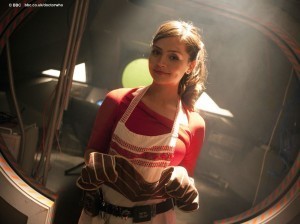 Coleman’s character of Oswin Oswald is explicitly domestic, from the cozy home she has set up for herself in the belly of a crashed spaceship to the egg whisk she wears in the utility belt of her little red dress. She even dictates letters home to her Mum. It’s all a cruel trick, of course, but it’s a clever one. Oswin is hanging on to the precious shreds of her remembered humanity, and the burnt birthday soufflé that was ‘too perfect to live’ is a part of that illusion.
Coleman’s character of Oswin Oswald is explicitly domestic, from the cozy home she has set up for herself in the belly of a crashed spaceship to the egg whisk she wears in the utility belt of her little red dress. She even dictates letters home to her Mum. It’s all a cruel trick, of course, but it’s a clever one. Oswin is hanging on to the precious shreds of her remembered humanity, and the burnt birthday soufflé that was ‘too perfect to live’ is a part of that illusion.
Domesticity – the place we live, the everyday tasks that heroic stories tend to ignore – is an important aspect of humanity. We don’t all have to be 1950’s housewives who make perfect soufflés, or even switch on an oven, but to me the most interesting science fiction (and indeed the most interesting history) is that which explores how people actually go about their daily lives.
 Oswin is living inside a Dalek shell. She’s not a human any more. But her plaintive cry of “Eggs, eggs, exterminate,” shows how much it hurts that she’s not human. The memory of ordinary things is all that is keeping her going. So her fantasy is a Robinson Crusoe wonderland in which her isolation becomes a safe haven with a comfy couch, endless wi-fi, her favourite music, and occasional attempts at baking.
Oswin is living inside a Dalek shell. She’s not a human any more. But her plaintive cry of “Eggs, eggs, exterminate,” shows how much it hurts that she’s not human. The memory of ordinary things is all that is keeping her going. So her fantasy is a Robinson Crusoe wonderland in which her isolation becomes a safe haven with a comfy couch, endless wi-fi, her favourite music, and occasional attempts at baking.
It’s Amy who dubs her ‘Souffle Girl,’ a name that the Doctor later remembers and associates with Oswin. It’s the soufflé-burning aspect of her personality that fans have grasped more readily than, say, her love of the opera Carmen. The idea of a Dalek who wants to cook a soufflé is absurd, but there’s a sadness behind the many egg whisk jokes that have whirled around the internet since Oswin’s debut.
All she wanted was to be herself again, and to survive. Instead, our job is to remember her…
But wait, there’s more!
In The Snowmen we are introduced to Clara, a bright-as-a-button Victorian governess (and occasional Cockney barmaid) who is smart and educated enough to blag her way into a refined job in a fancy house, but drops into her commoner accent when under stress.
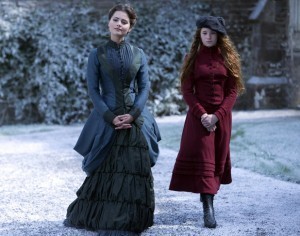 The governess is an absolute embodiment of Victorian domesticity, and in a story which subverts other narrative expectations of the Victorian era, especially when it comes to conventional marriage and the truth behind the iconic Sherlock Holmes stories, Clara is pretty much the perfect governess.
The governess is an absolute embodiment of Victorian domesticity, and in a story which subverts other narrative expectations of the Victorian era, especially when it comes to conventional marriage and the truth behind the iconic Sherlock Holmes stories, Clara is pretty much the perfect governess.
Many fans compared her turn in this story to Mary Poppins, who belongs to the later Edwardian era but certainly has much in common with the arch, unflappable Clara. As “Miss Montague,” she spouts nonsense when it suits her, but with great conviction, and she demonstrates her knowledge of how Victorian households are supposed to work down to the finest detail, only to stomp on those rules.
(also it’s worth noting this story includes two examples of the governess trope: the good governess who is the heroine, and the evil stern governess who tortures little children and throws people off clouds)
Clara protects the children, her prime job, but otherwise has little deep attachment to the social conventions of her time. She isn’t especially shocked by Vastra and Jenny’s relationship, she loses patience with keeping up the facade in front of her stuffy employer, and she answers the call of adventure over and over, almost before that call is voiced.
 And oh yes, she leaps upon carriages, climbs magical staircases in the clouds, and believes everything she sees no matter how wondrous it appears. Add to this the “serious silliness” she speaks to children, and if Clara was not female, it wouldn’t be Mary Poppins we would be comparing her to, it would be the Doctor himself.
And oh yes, she leaps upon carriages, climbs magical staircases in the clouds, and believes everything she sees no matter how wondrous it appears. Add to this the “serious silliness” she speaks to children, and if Clara was not female, it wouldn’t be Mary Poppins we would be comparing her to, it would be the Doctor himself.
Much discussion has happened around the Doctor in The Snowmen, and how he spends a large part of the story not acting like the Doctor – refusing the call to adventure, batting away potential companions, sulking, insulting his friends and oh yes, can we talk about the fact that he has parked the TARDIS in a semi-permanent position?
We often see the action hero who deals with grief and tragedy by walking stoically off into the distance. Since flitting about randomly is the Doctor’s usual response to everything, the fact that he mourns Amy and Rory’s loss by settling down is rather telling. He has even redecorated his TARDIS interior, in a grand clean sweep that many would recognise as a classic post-breakup gesture.
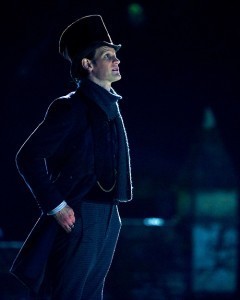 More than anything, in The Snowmen, we see how hard it is for the Doctor to avoid his own narrative. He can’t travel in the TARDIS because she always takes him where he needs to go and that means new adventures, new friends, drama and peril. So he stays in this place where he has friends already, but the kind of friends he can trust to take care of business in his retirement, friends who take no for an answer when he continually refuses to help people, and in the case of Strax in particular, friends who require no emotional energy from him.
More than anything, in The Snowmen, we see how hard it is for the Doctor to avoid his own narrative. He can’t travel in the TARDIS because she always takes him where he needs to go and that means new adventures, new friends, drama and peril. So he stays in this place where he has friends already, but the kind of friends he can trust to take care of business in his retirement, friends who take no for an answer when he continually refuses to help people, and in the case of Strax in particular, friends who require no emotional energy from him.
You get the impression that Clara isn’t the first companion to have auditioned her way into his path over however many weeks-months-years the Doctor has been parked above Victorian London. Plucky young women may well have been hurling themselves at him on a regular basis, for him to be so quick about calling for the Memory Worm.
Madam Vastra works here as a kind of anti social secretary, standing between these plucky youngsters and the Doctor as a final barrier to keep him from the narrative that is trying to batter at his stubborn shield. Clara is only able to break through by choosing a word that has significance to the Doctor, seemingly by coincidence. “Pond.”
(On rewatching I might add, we don’t see her choose that word personally which allows for the charming possibility that Vastra herself is on Clara’s side)
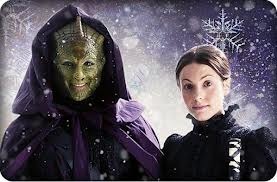 Domesticity in The Snowmen is particularly represented by Madam Vastra and Jenny, who are now formally married in a time when lesbians were presumed by law to not even exist. While this is largely played for humour in the story, particularly in Vastra’s unabashed acknowledgement of her wife (on the grounds presumably that the stuffy Victorians also have to deal with the fact that she’s a green lizard woman so why not get it all over with at once), it also represents significant character development for Jenny.
Domesticity in The Snowmen is particularly represented by Madam Vastra and Jenny, who are now formally married in a time when lesbians were presumed by law to not even exist. While this is largely played for humour in the story, particularly in Vastra’s unabashed acknowledgement of her wife (on the grounds presumably that the stuffy Victorians also have to deal with the fact that she’s a green lizard woman so why not get it all over with at once), it also represents significant character development for Jenny.
No longer the maid sleeping with her mistress, Jenny now dresses differently as the lady of the house – and this is not only one in the eye for Victorian society because she and Vastra are both women, but also because of the generally deplorable sexual vulnerability of women in domestic service at that time. Maids were often seduced by the men of the houses in which they worked, and were far more likely to end up pregnant, unemployed and homeless than married to their former employer. Jenny’s done pretty well for herself – and it’s one more sign of Vastra’s flouting of conventions.
This brings us back to Clara, who exists both inside the domestic circle and yet has the strange, unexplained freedom to fling it off like a coat any time she wishes. Her snog of the Doctor in the corridor of her employer’s house is deeply inappropriate, not only because she is supposedly a young unmarried woman of that era, and because she barely knows him, but especially because of her position in that house – they make a joke of the Doctor being her gentleman friend, and his abashed insistence that they were kissing rather than fighting a monster (not realising apparently that this is a pretty scandalous thing to admit to in this era) but a real domestic servant would be turned out on the street for such behaviour.
I don’t think this anachronistic feeling is remotely accidental. Whenever Clara openly shucks off the governess voice or anything else that goes along with that job, it feels like she is stepping out of a role. Part of the reason we compare her to Mary Poppins is because like that famous nanny, she doesn’t quite fit into the world we see her in. She behaves as if she is outside it all, beyond the constraints of the era.
This adds to the Doctor’s general discombobulation about Clara. He can’t predict what she will do, which alarms and intrigues him. Part of it is that she is not behaving in the way that Victorian ladies (or indeed lower lass women) do, but there’s also that pesky domestic goddess aspect to her which makes her even more of an enigma – ladies with domestic concerns are difficult for him to get the hang of at the best of times.
But Clara makes no sense to him regardless of whether she is acting within or without the bounds of her society. When she first sees inside the TARDIS, her first words are opposite to what we’ve always heard before – it’s smaller on the outside. More to the point, she’s the first person to respond almost instantly with practical questions about how life on board the TARDIS works.
Is there a kitchen? It’s actually an important question. Apart from the food machine in the early days, and Tegan and Turlough providing a massive tropical fruit plate in The Five Doctors, there’s been little examination of how the day to day functions are achieved within the TARDIS. It’s there in the books and audios – one of my favourite Doctor Who scenes of all times is at the end of the audio The Settling where Ace and Hex, recovering from the trauma of Cromwell’s battlefield, quietly make tea for each other, walking to the library to pick lemons from a tree that grows there because there isn’t any freshmilk in the fridge.
The juxtaposition of the domestic with the alien is one of the loveliest, cleverest things that Doctor Who does, and yet we so rarely see domesticity shown within the TARDIS herself. The new design in fact, was planned to be “less whimsical” than the previous version, and manages to be the starkest version of the console room since it was just a white room with roundels on the walls. Never mind a kitchen, there’s not even anywhere to sit down!
Rose had to take her washing home, presumably because she never found a laundry in the TARDIS. Amy and Rory weren’t allowed a double bed. But Clara, we are certain, would have made use of the damn kitchen if she had been given half a chance. If only the Doctor had remembered that crucial point about closing the TARDIS door when he has friends over…
Clara doesn’t just die in this story. She is snatched out of the one place that Doctor Who viewers are conditioned to believe is safe. The frozen monster who represents a far less cuddly version of the Victorian governess actually reaches right into the console room to grab her, and she ends up falling to her death.
Young ladies die a lot in Victorian novels. It’s a common literary trope. They also lie wanly on couches due to mysterious illnesses. But even as Clara lies wanly on the table about to expire, she is not behaving like a traditional Victorian miss. There’s something strange about her, and we don’t get to know what it is…
The most interesting thing about Clara as a companion is that she has died twice and we haven’t even met her yet. Two highly successful auditions, and the Doctor was willing to hand over the TARDIS key to her before the second adventure was even over. But without wanting to spoil anyone, there was a tidbit in the most recent Doctor Who Magazine which suggested modern Clara’s job at least will make her eligible for a further essay in this series… no word yet on her baking skills, but we can only hope she gets to wield an egg whisk at some point in the next couple of years.
Of course, with one story in the impending season named Journey To The Centre of the TARDIS, it looks like we are going to get to poke around the latest version of the Doctor’s home, just in time for the 50th anniversary. Does this mean that Clara will be the first companion since the 1980’s to get her own room in the TARDIS that we will actually see?
I’m laying a bet now on her preferred decorating style: vintage.
[Crossposted at Doctor Her]
March 23, 2013
WHO-50: The 70′s
A visual round up of the second decade of my Doctor Who blogging project. The 1970′s was the era of Pertwee and Baker, of mini-skirts and go-go boots, frilly skirts and long, trippable scarves.
March 21, 2013
Friday Links Has the Scrunchie Out
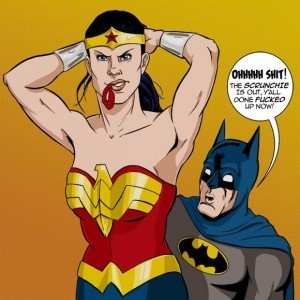 This image is one of my favourite things about the internet this week, perfectly summing up my feelings about action women on TV (and in comics) who don’t tie their hair back when they mean business. (Another reason to love Jo Lupo on Eureka – and EVENTUALLY Olivia on Fringe). Also omg Batman as the sassy friend is adorable.
This image is one of my favourite things about the internet this week, perfectly summing up my feelings about action women on TV (and in comics) who don’t tie their hair back when they mean business. (Another reason to love Jo Lupo on Eureka – and EVENTUALLY Olivia on Fringe). Also omg Batman as the sassy friend is adorable.
In other inspiring and frustrating (frustrspiring?) online discussion, this commentary on an article made of stupid [Men Invented the Internet!] not only calls out the stupid but is matched with a wonderful series of tweets by people acknowledging women they know (moms in most cases) who were actively involved with the early computing industry.
It’s also mostly wonderful for this quote:
But eventually, I managed to put down my frying pan and unbunch my apron, and I sat down on my princess tuffet and asked a man to help me read the whole thing.
Ian McKellen is going to officiate Patrick Stewart’s wedding which is beyond adorable, though it does raise the possibility that the wedding is going to be invaded by giant robots or mutants out for revenge.
More on the “rape/realism in epic/grimdark fantasy” discussion – Liz Bourke wrote a great, thoughtful piece on it and Marie Brennan has written a wonderful analysis of the issues with “Welcome to the Desert of the Real.”
Many books review magazines are still failing to adequately cover books by women, or indeed to publish reviews by women. This open letter to Harpers from a loyal reader is really touching and raises the problematic issue where just because a woman is in “power” in editorial does not mean she will be any better ally to female readers and writers than a man would – after all, the metric for being taken seriously still means celebrating mostly men.
Cheryl highlights an issue I hadn’t otherwise heard about, where Bristol Comic Expo in the UK is using a topless piece of fan art of iconic female superhero Halo Jones in their promotions. So, that’s what they think female characters are good for. Enough said.
The Mary Sue points to a historical piece of embroidery about science and the solar system.
Bitch Magazine looks at the highs and lows of Season 3 of Downton Abbey (with spoilers) and particularly the great female characters which makes up somewhat for the gratuitous deaths. Lady Edith definitely did the best out of that season, with Mrs Hughes and Mrs Patmore a close second.
Now, videos! What I WANT to show you all is Episode 98 of The Lizzie Bennet Diaries because OMG PEOPLE IT HAS BEEN WORTH THE WAIT! But if you have not in fact watched the last 97 episodes it probably won’t mean as much to you. Now would be a good time to catch up, that’s all I’m saying.
Have some Much Ado About Nothing Instead
March 20, 2013
SpecFic ’12
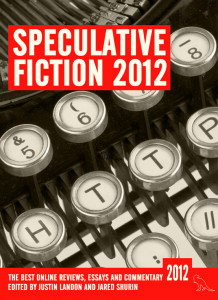 And in other news, I’m totally in an anthology with Joe Abercrombie, Elizabeth Bear, Kameron Hurley, NK Jemisin and many other awesome people!
And in other news, I’m totally in an anthology with Joe Abercrombie, Elizabeth Bear, Kameron Hurley, NK Jemisin and many other awesome people!
Okay, it’s not a fiction anthology… but it’s still pretty awesome.
Edited by bloggers Justin Landon (Staffer’s Book Review- US) and Jared Shurin (Pornokitsch – UK), Speculative Fiction 2012: The Best Online Reviews, Essays and Commentary collects over fifty pieces from science fiction and fantasy’s top authors, bloggers and critics.
Author and podcasting sensation Mur Lafferty, whose newest novel The Shambling Guide to New York City is due out from Orbit Books this Spring, has agreed to write the foreword. “Lafferty’s writing career germinated online. She’s been a pioneer in the space and understands why the work in this book is so important. She’s the perfect person to put it into context,” said Landon.
The book will be out in April. I’m extra excited because the piece being reprinted from my blog is from my Where The Wonder Women Are series of superhero essays, which I am particularly proud of.
2012 Aurealis Awards Shortlists
I’m excited by this year’s shortlists – so many of my most-beloved works from last year are being honoured here! Especially delighted that Sea Hearts and Bitter Greens, my two favourite fantasy novels from 2012 are going head to head in the fantasy novel section, and also that Jason Nahrung and Kirstyn McDermott’s novels from Xoum appear here despite being published right at the end of 2012. There’s some dedicated judges in that category this year!
Also very excited to see lots of TPP stuff across the board including various stories from Margo and Kaaron’s collections, and Jason’s excellent Salvage.
2012 Aurealis Awards finalists announced!
Winners of the 2012 Aurealis Awards and the Peter McNamara Convenors’ Award for Excellence will be announced at the Aurealis Awards ceremony, on the evening of Saturday 18 May at the Independent Theatre, North Sydney. The event is proudly supported by the Copyright Agency Cultural Fund. Details of the evening and a link to the online booking website are available at www.aurealisawards.org
FANTASY NOVEL
Bitter Greens by Kate Forsyth (Random House Australia)
Stormdancer by Jay Kristoff (Tor UK)
Sea Hearts by Margo Lanagan (Allen & Unwin)
Flame of Sevenwaters by Juliet Marillier (Pan Macmillan Australia)
Winter Be My Shield by Jo Spurrier (HarperVoyager)
FANTASY SHORT STORY
“Sanaa’s Army” by Joanne Anderton (Bloodstones, Ticonderoga Publications)
“The Stone Witch” by Isobelle Carmody (Under My Hat, Random House)
“First They Came” by Deborah Kalin (Andromeda Spaceways Inflight Magazine 55)
“Bajazzle” by Margo Lanagan (Cracklescape, Twelfth Planet Press)
“The Isles of the Sun” by Margo Lanagan (Cracklescape, Twelfth Planet Press)
SCIENCE FICTION NOVEL
Suited by Jo Anderton (Angry Robot)
The Last City by Nina D’Aleo (Momentum)
And All The Stars by Andrea K Host (self-?published)
The Interrogation of Ashala Wolf by Ambelin Kwaymullina (Walker Books)
Confusion of Princes by Garth Nix (Allen & Unwin)
The Rook by Daniel O’Malley (Harper Collins)
SCIENCE FICTION SHORT STORY
“Visitors” by James Bradley (Review of Australian Fiction)
“Significant Dust” by Margo Lanagan (Cracklescape, Twelfth Planet Press)
“Beyond Winter’s Shadow” by Greg Mellor (Wild Chrome, Ticonderoga Publications)
“The Trouble with Memes” by Greg Mellor (Wild Chrome, Ticonderoga Publications)
“The Lighthouse Keepers’ Club” by Kaaron Warren (Exotic Gothic 4, PS Publishing)
HORROR NOVEL
Bloody Waters by Jason Franks (Possible Press)
Perfections by Kirstyn McDermott (Xoum)
Blood and Dust by Jason Nahrung (Xoum)
Salvage by Jason Nahrung (Twelfth Planet Press)
HORROR SHORT STORY
“Sanaa’s Army” by Joanne Anderton (Bloodstones, Ticonderoga Publications)
“Elyora” by Jodi Cleghorn (Rabbit Hole Special Issue, Review of Australian Fiction)
“To Wish Upon a Clockwork Heart” by Felicity Dowker (Bread and Circuses, Ticonderoga Publications)
“Escena de un Asesinato” by Robert Hood (Exotic Gothic 4, PS Publishing)
“Sky” by Kaaron Warren (Through Splintered Walls, Twelfth Planet Press)
YOUNG ADULT NOVEL
Dead, Actually by Kaz Delaney (Allen & Unwin)
And All The Stars by Andrea K. Host (self-?published)
The Interrogation of Ashala Wolf by Amberlin Kwaymullina (Walker Books)
Sea Hearts by Margo Lanagan (Allen & Unwin)
Into That Forest by Louis Nowra (Allen & Unwin)
YOUNG ADULT SHORT STORY
“Stilled Lifes x 11” by Justin D’Ath (Trust Me Too, Ford Street Publishing)
“The Wisdom of the Ants” by Thoraiya Dyer (Clarkesworld)
“Rats” by Jack Heath (Trust Me Too, Ford Street Publishing)
“The Statues of Melbourne” by Jack Nicholls (Andromeda Spaceways Inflight Magazine 56)
“The Worry Man” by Adrienne Tam (self-?published)
CHILDREN’S FICTION (told primarily through words)
Brotherband: The Hunters by John Flanagan (Random House Australia)
Princess Betony and the Unicorn by Pamela Freeman (Walker Books)
The Silver Door by Emily Rodda (Scholastic)
Irina the Wolf Queen by Leah Swann (Xoum Publishing)
CHILDREN’S FICTION (told primarily through pictures)
Little Elephants by Graeme Base (author and illustrator) (Viking Penguin)
The Boy Who Grew Into a Tree by Gary Crew (author) and Ross Watkins (illustrator) (Penguin Group Australia)
In the Beech Forest by Gary Crew (author) and Den Scheer (illustrator) (Ford Street Publishing)
Inside the World of Tom Roberts by Mark Wilson (author and illustrator) (Lothian Children’s Books)
ILLUSTRATED BOOK / GRAPHIC NOVEL
Blue by Pat Grant (author and illustrator) (Top Shelf Comix)
It Shines and Shakes and Laughs by Tim Molloy (author and illustrator) (Milk Shadow Books) Changing Ways #2 by Justin Randall (author and illustrator) (Gestalt Publishing)
ANTHOLOGY
The Year’s Best Australian Fantasy and Horror 2011 edited by Liz Grzyb and Talie Helene (Ticonderoga Publications)
Bloodstones edited by Amanda Pillar (Ticonderoga Publications)
The Best Science Fiction & Fantasy of the Year Volume 6 edited by Jonathan Strahan (Night Shade Books)
Under My Hat edited by Jonathan Strahan (Random House)
Edge of Infinity edited by Jonathan Strahan (Solaris Books)
COLLECTION
That Book Your Mad Ancestor Wrote by K. J. Bishop (self-?published)
Metro Winds by Isobelle Carmody (Allen & Unwin)
Midnight and Moonshine by Lisa L. Hannett & Angela Slatter (Ticonderoga Publications)
Living With the Dead by Martin Livings (Dark Prints Press)
Through Splintered Walls by Kaaron Warren (Twelfth Planet Press)
Agathon #11 Partners in Crime
Kathryn and I started out with a challenge to read every book written by Agatha Christie, in order of publication – we’re blogging as we go along. We spoil all the things!
Oh, Tommy and Tuppence. I wasn’t expecting this at all!
I’ve been fairly meh on the Christie short story collections in the past, compared to the novels, but this one is splendid largely because it is a short story collection pretending to be a novel! Or possibly a novel pretending to be a short story collection.
The premise is basically that six years into their marriage (they are now in their early 30’s) Tuppence is bored and Tommy’s government job suddenly throw them a magnificent bit of espionage to play with. It is vital for King and Country that the cute married couple take over a detective agency (after the unfortunate death of its real owner) and play at being detectives until a Vital Piece of Espionage comes their way.
And play they do. Every chapter represents a new case to solve, and Tommy and Tuppence throw themselves into their roles with great glee, impersonating and parodying every famous detective they know. I only recognised a few of them to my shame, but it didn’t spoil my enjoyment of Tommy and Tuppence’s indulgences.
Some of the cases are silly and some very serious, but Tommy and Tuppence are never ever serious (well, maybe a little towards the end) and are indulged in their fancies by a remarkably tolerant Detective Inspector, and their rather theatrical new footman Alfred who takes to their life of crime with such joy.
Buttered muffins! Cheese Cakes at the tea shop! And oh, those little grey cells. How much do I love the fact that Christie parodies Poirot in this book every much as Holmes and the many other detecting gentlemen of the paperback novel set.
This is one I suspect I shall come back to and read with joy several more times in my life. Possibly while eating buttered muffins.
Ok, this is interesting, because I really didn’t like ‘Partners In Crime’ (and potentially this is the first major difference in opinion that Tansy and I have had!!). Granted, I did not find it as tedious as the first short story collection that we read as part of the Agathon (Poirot Investigates) but I did find the premise of Tommy and Tuppence taking over a detective agency to be a fairly contrived and shallow way to string a series of short stories together. Don’t get me wrong, they are both still charming and I find their interactions still *mostly* delightful (if sometimes a bit forced here), but I am yet to read a Christie short story that I find as satisfying as her longer works. A bit of internet research shows that all the stories in ‘Partners in Crime’ had been published before, though it’s not clear whether Christie intended to publish them all together in the end, or whether it was simply expedient to do so.
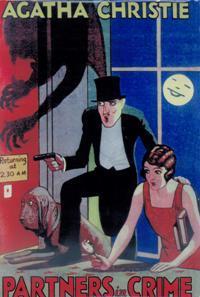 The one component I did like of this book was the on-going homage to other famous detectives. Most of these went over my head (because most of the detectives referenced are no longer as famous as they once were) but there were some nice references to Sherlock Holmes in ‘The Missing Lady’ – and Christie’s tongue in cheek references to Poirot’s little grey cells in the final short story did thrill me much more than it should have!
The one component I did like of this book was the on-going homage to other famous detectives. Most of these went over my head (because most of the detectives referenced are no longer as famous as they once were) but there were some nice references to Sherlock Holmes in ‘The Missing Lady’ – and Christie’s tongue in cheek references to Poirot’s little grey cells in the final short story did thrill me much more than it should have!
PREVIOUSLY:
The Big Four (1927)
The Mystery of the Blue Train (1928)
The Seven Dials Mystery (1929)
COMING NEXT:
The Mysterious Mr Quinn (1930)
The Murder at the Vicarage (1930)

